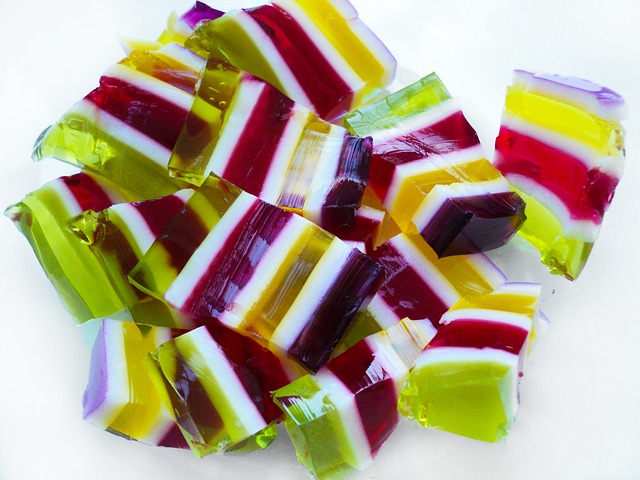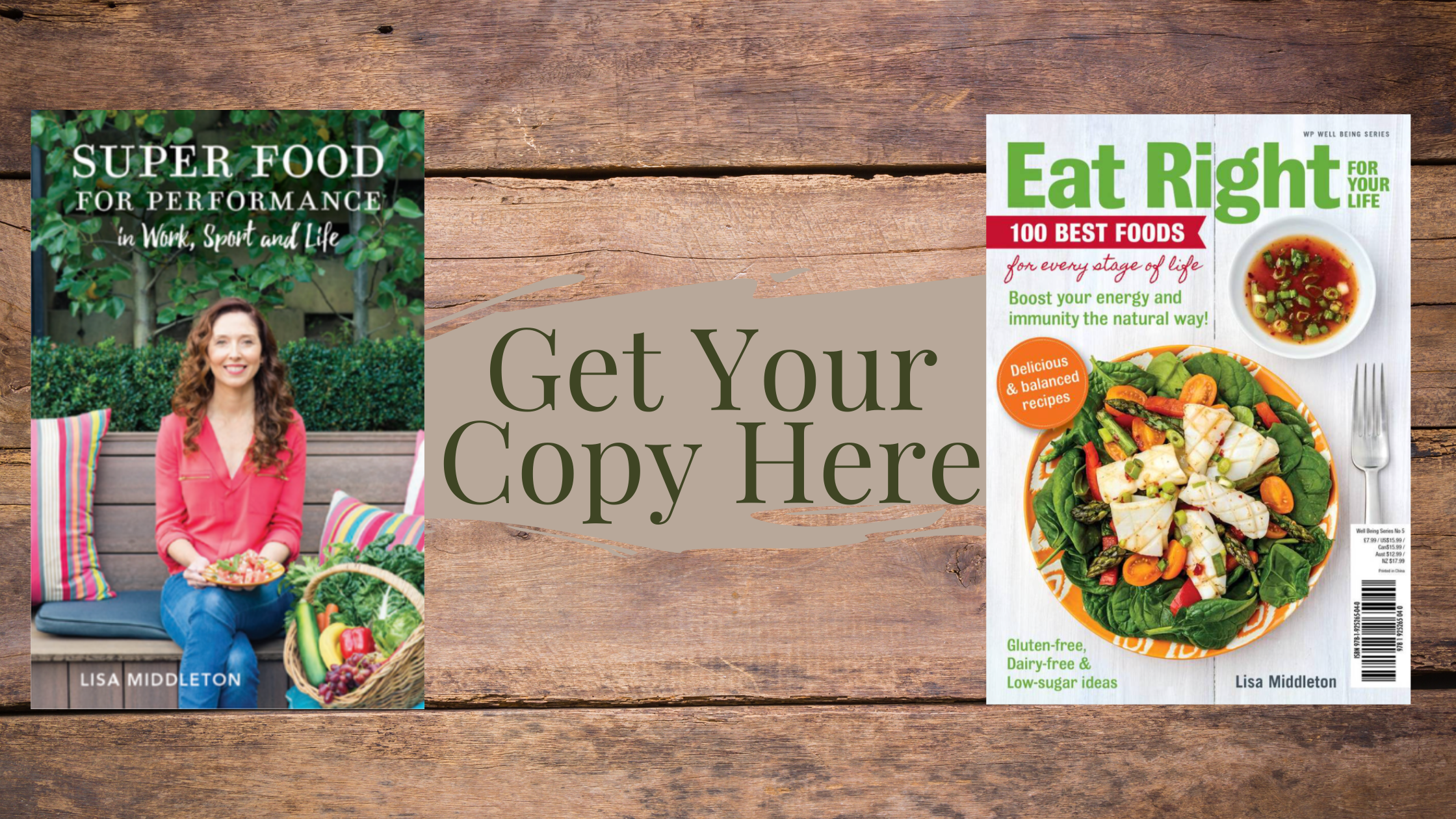If you need more advice checkout my book ‘Super Food for Performance’ and use my special discount code of LISA10 to get 10% off. Limited stock available.
The other popular reason that people avoid wheat is because the latest diet they are following tells them to! Whether it be Paleo, LCHF, Atkins.....many fad diets recommend a reduction in carbohydrate, which is often very successful for weight loss, but unfortunately some diets also imply that 'wheat is toxic'. Yes, toxic to someone with coeliac disease, but not for most people. Personally, I am all for reducing carbohydrate as I think most people eat too much, but if you have a healthy digestive system then you should have absolutely no trouble digesting wheat.
Some people DO just feel better avoiding wheat. If you cut out wheat you are not just avoiding nutritious carbohydrate foods like wholegrains - you will also omit cakes, biscuits, savoury snacks, pastries and many other processed, high sugar and low-nutrient foods. So it makes sense you would feel better and probably lose weight eating less of the latter.
Poor old bread seems to get terribly bullied when it comes to grain bashing, it is always the first food to be discarded when there is a change to wheat-free. But it may not be the rye/spelt/wholegrain slice that is contributing to digestive symptoms. It may just be the amount....think big thick sandwiches (the ones you buy at sandwich shops are often equivalent to about 4 pieces of standard bread) and overflowing bowls of pasta........eat a bit less at each sitting, and slowly, and your digestive symptoms could likely improve.
Be aware that sometimes a change to wheat and gluten-free can lead to weight gain rather than weight loss, not to mention constipation if fibre intake is reduced. Some of the gluten-free substitutes are low in fibre and can be higher in fat/kilojoules, and often not as filling as wholegrain wheat options. This is important to consider if you are eating gluten-free and trying to lose weight.
If you DO need to avoid wheat, and you train really hard, it can be a real challenge to make sure you are eating carbohdyrate foods that are nutrient-dense (rather than living on processed gluten-free bread, rice crackers and jelly lollies for carbohydrates). Here are some super nutritious wheat and gluten-free foods that will give you carbs to power your training and have you recovering like a champ, without the gastrointestinal issues.
POTATO (SWEET OR WHITE) - For some reason potatoes have gone out of favour in recent years, but as far as a natural source of carbohydrate, you can't go past nutritious potatoes. Often sweet potato is recommended over white, usually because of its lower glycemic index and vitamin content, but white potato with a higher glycemic index is terrific for post-exercise meals, and is fine when combined with other vegetables anyway. Remember, although potato is higher carbohydrate than other vegetables, it is still a lot lower in carbohydrate than rice, pasta, and many other grains ( for example, the carbohydrate content of white potato is ~12.5g/100g cooked, sweet potato ~19g/100g cooked, brown rice ~30g/100g cooked).
SWEET CORN - Sweetcorn is another sneaky source of carbohydrate, also packed with nutrients and fibre, and a similar carbohydrate content to white potato at ~13g/100g cooked. Great in salads, soups, main meals or a cob of corn as a snack.
QUINOA - Probably the most over-promoted and over-estimated food in the world, if you can afford quinoa it is still a great gluten-free 'seed' (see my comparison of oats an quinoa for more detail Oats vs quinoa for health, energy and performance.
RICE - Super-rich in carbohydrate, try the different colours and varieties of rice, or one of the many rice mixes available these days (such as rice with lentils or quinoa) to boost the fibre and nutrient content. There is nothing wrong with white rice too, especially if you get lots of fibre and nutrition from other foods. If you are looking for optimal nutrition value though, go for the less processed varieties (but not everything you eat has to be wholegrain or brown all the time!). If you are active, sometimes too much fibre can be a problem with stomach symptoms, particularly around competition.
OATS* - Oats are still controversial for people with coeliac disease and in Australia oats are not permitted to be considered gluten-free, although in many European countries uncontaminated oats are considered safe. The issue is complex and relates to contamination risks during processing and also a component in oats called avenins that some people can react to. For those avoiding wheat for reasons other than coeliac disease, enjoy oats regularly. For more info on oats see my previous blog mentioned above Oats vs quinoa for health, energy and performance.
RYE/SPELT BREAD (not suitable for coeliac) - If you have coeliac disease you need to avoid rye flour and all bread needs to be of the gluten-free variety. But if you are trying to reduce gluten for other reasons then choosing a bread with a high proportion of rye vs wheat, or a spelt slice, can be a tasty source of carbohydrates.
GLUTEN-FREE PASTA - Pasta is a quick and easy carbohydrate option for active people. Gluten-free pasta has improved over the years, and you can now find a wide range of varieties in most supermarkets. If it's a while since you have tried gluten-free pasta, give some a try, combine with lean protein and vegetables or salad for a balanced meal.
MILLET - I have a confession to make. Only once have I knowingly eaten millet. Well, millet flour, when I was trialling some gluten-free muffin recipes. This sounds very hypocritical, to incude millet on this list but not really eat it myself! I am one of the many fortunate people who does not have a problem digesting wheat and wheat products, although to be honest I don't actually eat a lot of wheat on a day-to-day basis. I am not on the lookout for wheat subtitutes for personal use, but I acknowledge the nutrient value of millet (it is a wholegrain, contains fibre and rich in magnesium). Try millet as a side dish with savoury dishes in the place of rice, or mixed together with quinoa or rice or made into porridge for breakfast.
AMARANTH - Again, not a regular staple in my cupboard, but amaranth is a nutritious pseudo-cereal (not officially a grain, but is used in similar ways and has a similar nutrition profile to other grains). Amaranth contains a range of minerals (such as calcium and iron), and has one of the best amino acid profiles of plant-based proteins. In Australia amaranth is commonly seen in dry cereals, but can also be cooked and used in dishes such as porridge and soup. In many countries it is popped and eaten like popcorn.
POPCORN - Speaking of popcorn....it won't quite do the job for recovery needs, due to its carbohydrate content being so low, you would need to eat buckets worth. But its low carbohydrate and energy density (1 small packet of popcorn only weighs 13g, with only 6g carbohydrate and ~55 calories) makes this a terrific wholegrain snack for active people who may be trying lose weight. A great alternative to potato crisps or other savoury snacks, which are often a popular choice when eating gluten-free. Make sure you go for the plain varieties, not the sugar/caramel coated options.
These are just a few nutritious and convenient options to help fuel your training and recovery. For more ideas, see Better Health Channel - Gluten-free Diet for an easy to read listing of gluten-containing and gluten-free foods.
For more information on coeliac disease and gluten go to Coeliac Australia and to learn more about fructose malabsorption and FOMAPS go to Monash University - Low FODMAP Diet for Irritable Bowel Syndrome.
If you are a bit confused about whether or not you should be avoiding gluten and/or wheat or if you already eat gluten-free and not sure if you are quite getting the balance right, then it might be worth sitting down with an Accredited Sports Dietitian, look for someone local to you via SDA Find a Sports Dietitian.
Don't forget to sign up to my newsletter by leaving your details via 'Connect' below for regular nutrition news just like this, plus practical nutrition updates and recipes. The picture at the top of this post 'Grilled Vegetable and Quinoa Salad' is featured in this month's newsletter, so sign up now if you want the recipe!
Lisa
P.S Click here to get a copy of my latest book, LISA10 % off.







































